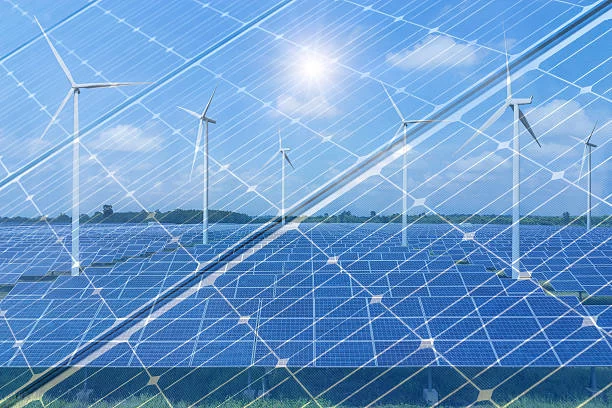Micro Grid Power Systems: Revolutionizing Energy Distribution
In today’s rapidly evolving energy landscape, micro grid power systems are emerging as a game-changer. These innovative systems offer a decentralized approach to power generation and distribution, bringing numerous benefits and opening up new possibilities for a more sustainable and resilient energy future.
I. What are MicroGrid Power Systems?
A micro grid is a localized power system that can operate independently or in conjunction with the main grid. It typically consists of a combination of power sources such as solar panels, wind turbines, diesel generators, and energy storage devices. Micro grids are designed to supply electricity to a specific area, such as a community, campus, or industrial complex.
II. Benefits of Micro Grid Power Systems
- Enhanced Reliability
– Micro grids can provide a reliable source of power even during grid outages. By having multiple power sources and energy storage, they can continue to operate independently, ensuring a continuous supply of electricity to critical loads.
– This is particularly important for areas that are prone to natural disasters or have unreliable grid connections.
- Increased Resilience
– Micro grids are more resilient to disruptions than traditional centralized power systems. They can quickly switch between different power sources and adapt to changing conditions, minimizing the impact of power outages.
– Additionally, micro grids can be designed to withstand extreme weather events and other emergencies, providing a higher level of security for communities and businesses.
- Environmental Sustainability
– Micro grids can incorporate renewable energy sources such as solar and wind power, reducing reliance on fossil fuels and lowering carbon emissions.
– By using local energy resources, micro grids can also help to reduce transmission losses and improve energy efficiency.
- Cost Savings
– Micro grids can offer cost savings by reducing the need for expensive grid infrastructure and transmission fees. They can also optimize energy usage and reduce peak demand charges, resulting in lower electricity bills.
– In some cases, micro grids can even generate revenue by selling excess power back to the grid.
III. Components of a Micro Grid Power System
- Power Sources
– Micro grids can utilize a variety of power sources, including renewable energy systems like solar panels and wind turbines, as well as conventional generators such as diesel or natural gas generators.
– Energy storage devices such as batteries or flywheels can also be integrated into the system to store excess power and provide backup during outages.
- Distribution Network
– The distribution network within a micro grid is responsible for delivering electricity to the end users. It typically consists of cables, transformers, and switches.
– Smart grid technologies can be employed to optimize the distribution of power and improve energy efficiency.
- Control and Management System
– The control and management system is the brain of the micro grid. It monitors and controls the operation of the power sources, energy storage devices, and distribution network.
– Advanced control algorithms can be used to balance supply and demand, optimize power flow, and ensure stable operation of the micro grid.
IV. Applications of Micro Grid Power Systems
- Remote Communities
– Micro grids are ideal for providing power to remote areas that are not connected to the main grid. They can utilize renewable energy sources and energy storage to meet the electricity needs of these communities.
– This can improve the quality of life for people living in remote areas and promote economic development.
- Islands and Offshore Installations
– Islands and offshore installations often face challenges in accessing reliable power. Micro grids can be designed to utilize local renewable energy resources and provide a stable source of electricity.
– This can reduce dependence on imported fuels and improve energy security.
- Military Bases and Emergency Response Sites
– Micro grids can be used to provide power to military bases and emergency response sites. They can operate independently during disasters or conflicts, ensuring a continuous supply of electricity for critical operations.
– The flexibility and resilience of micro grids make them an ideal solution for these applications.
- Industrial and Commercial Facilities
– Industrial and commercial facilities can benefit from micro grids by reducing energy costs and improving energy reliability. They can install on-site power generation and storage systems to meet their own electricity needs and reduce reliance on the grid.
– Micro grids can also help these facilities meet their sustainability goals by incorporating renewable energy sources.
V. Challenges and Future Outlook
- Technical Challenges
– Micro grid power systems face technical challenges such as voltage and frequency regulation, power quality management, and grid synchronization.
– Continued research and development is needed to address these issues and improve the performance and reliability of micro grids.
- Regulatory and Policy Issues
– The deployment of micro grids requires appropriate regulatory and policy frameworks. This includes issues such as interconnection standards, net metering policies, and incentives for renewable energy integration.
– Governments and regulatory bodies need to work together to create a supportive environment for the development of micro grids.
- Cost and Financing
– The initial cost of installing a micro grid can be high. However, the long-term benefits in terms of reliability, resilience, and cost savings can make them a viable option.
– Innovative financing models and partnerships can help to overcome the cost barrier and accelerate the deployment of micro grids.
Despite these challenges, the future of micro grid power systems looks promising. As technology continues to advance and costs decline, micro grids are expected to become an increasingly important part of the energy landscape. They offer a decentralized and sustainable approach to power generation and distribution, providing greater reliability, resilience, and environmental benefits. With the right policies and investments in place, micro grids can play a crucial role in building a more sustainable and resilient energy future.

